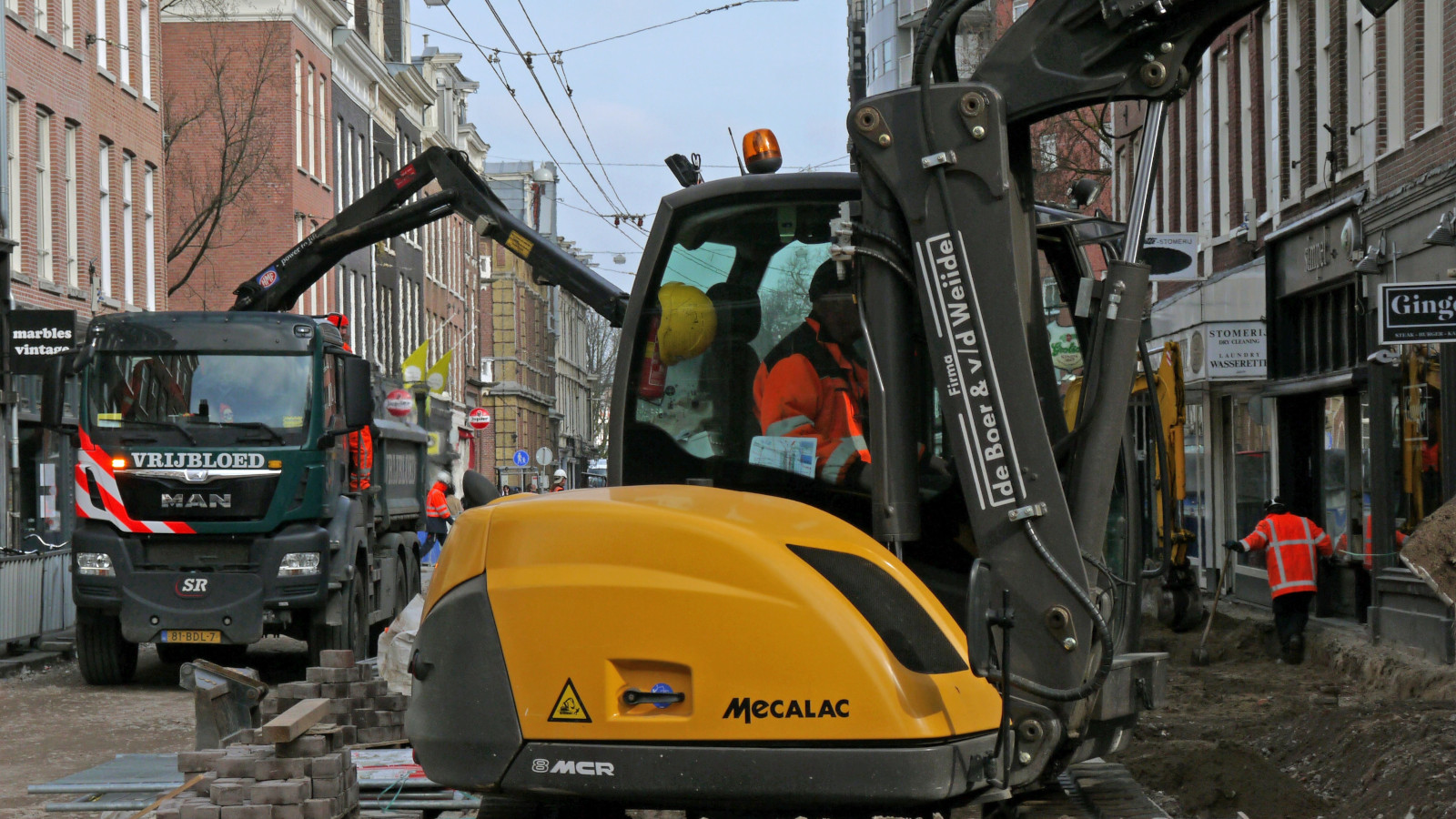
Belgian infrastructure and public buildings do not compare well with those of neighbouring countries. In terms of quality, the World Economic Forum ranks Belgian infrastructures in 33rd position (out of 137 countries), far behind those of neighbouring countries, which oscillate between 5th and 16th position.
The consequences of a major deficit
Belgian infrastructure is losing ground. 15 years ago it was ranked 15th, instead of 33rd today. At the same time, the figures show that Belgium has spent only a small share of its resources on developing and improving its public capital (its infrastructure, buildings and durable goods such as all kinds of equipment). On average, it has spent 0.1% of its GDP over the last 25 years, which is significantly less than the average of its neighbouring countries (which have spent 0.9% of their GDP).
This observation is linked to the well-known weakness of Belgian public investment. Although it represented 5% of GDP at the beginning of the 1980s, it has fallen so low (around 2% of GDP) that it has barely been able to compensate for the natural depreciation of the stock of public capital over 20 years (from 1989 to 2009). Today, representing 2.6% of GDP (2020 figure), they remain below the European average (3% in the euro zone) and neighbouring countries (3.7%).
A certain awareness of needs
It is in this context that the Michel government (2014-2020) launched the national pact for strategic investments. In the wake of this, the government agreement resulting from the 2019 elections expressed the desire to gradually increase Belgian public investment to 4% of GDP by 2030. The Belgian recovery plans adopted to complement the European plan were designed with this in mind.
Initiatives still too timid…
The scale and timing of these plans show, however, that more needs to be done to achieve this objective. On the basis of information in the possession of the Federal Planning Bureau, for the years 2022-2027, it appears that public investment should rise from 2.6% of GDP in 2020 to 3% in 2024 but then fall back to 2.7% in 2027, i.e. after the recovery plans have come to an end. The current trajectory for public investment does not therefore lead to the current government’s target of public investment representing 4% of GDP by 2030.
ABOUT THE AUTHOR
Jean-Pierre Liebaert
Aquiec-Vkebi
Jean-Pierre Liebaert has been following the construction situation and all economic issues relating to construction since he graduated as a Civil Engineer in Applied Mathematics - Economics. On the strength of this experience, he has represented Belgium at Euroconstruct since 2000, through AQUIEC. He is also general adviser at Embuild, member of the economic commission of the Belgian Federation of Enterprises and holds various mandates in official Belgian bodies. These include the Central Economic Council, the Higher Council for Statistics and the pricing office for compulsory construction insurance.
…and underestimated needs
Moreover, this objective still appears insufficient even if it is already ambitious. The long period of under-investment now calls for catching up, and this is indeed very slow, with public investment representing 4% of GDP. Assuming that neighbouring countries stabilise their public investment at the 2020 level (3.7% of GDP), this would result in a differential favourable to the Belgian economy which would be both significant (0.3% of GDP) and much more limited than the negative differential observed over the last 25 years. As a reminder, an average differential equal to 0.8% of GDP has been observed to the detriment of the development of the Belgian public capital stock. This means that with public investments corresponding to 4% of GDP, Belgian infrastructure would take many decades to catch up with the ground lost during the years of underinvestment.
The public investment needs required today in terms of sustainability (especially in the context of climate change) are in addition to the need to catch up.
It is thus clear that public investments representing 4% of GDP will be insufficient to catch up after more than 25 years of underinvestment and to meet the new public investment needs. Meeting these new needs will probably lead neighboring countries to increase their public investments beyond their current level. In this case, there would no longer be any question of catching up, with public investment representing 4% of GDP in Belgium.
Towards more work
These various observations indicate that, independently of budgetary constraints, the context is currently favorable to the development of public works in Belgium over the coming years.
Unfortunately, the timing and proportions of this development remain unknown. And this is all the more true as budgetary constraints cannot be ignored, especially in the current context where public finances are once again undermined by a crisis (this time an energy crisis) and the support measures it calls for.
Everything will therefore depend on the capacity of the Belgian authorities to take up the challenge of relaunching public investment despite the impact of the energy crisis on public finances and the size of both the deficit and the debt.
ABOUT THE AUTHOR
Jean-Pierre Liebaert
Aquiec-Vkebi
Jean-Pierre Liebaert has been following the construction situation and all economic issues relating to construction since he graduated as a Civil Engineer in Applied Mathematics - Economics. On the strength of this experience, he has represented Belgium at Euroconstruct since 2000, through AQUIEC. He is also general adviser at Embuild, member of the economic commission of the Belgian Federation of Enterprises and holds various mandates in official Belgian bodies. These include the Central Economic Council, the Higher Council for Statistics and the pricing office for compulsory construction insurance.
